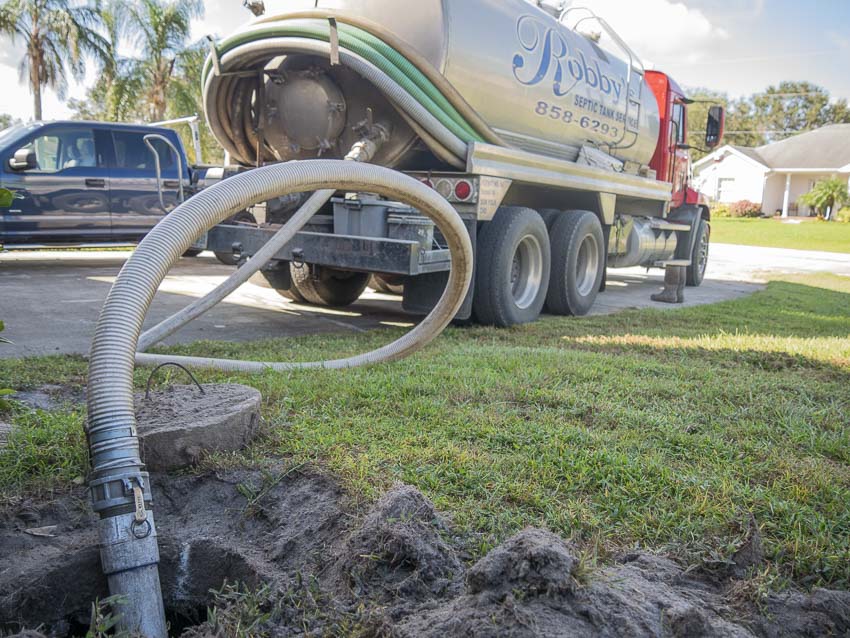Stillwell Septic And Grading Can Be Fun For Anyone
The Best Guide To Stillwell Septic And Grading
Table of ContentsThe Stillwell Septic And Grading DiariesSome Known Incorrect Statements About Stillwell Septic And Grading Stillwell Septic And Grading Fundamentals ExplainedThe 8-Minute Rule for Stillwell Septic And GradingThe Best Guide To Stillwell Septic And GradingThe 20-Second Trick For Stillwell Septic And GradingTop Guidelines Of Stillwell Septic And Grading
Overall, septic system setup is a complex process that calls for careful preparation and implementation. House owners must work with a reliable installment group and recognize local laws and requirements to guarantee that their septic system functions correctly for several years ahead. After the sewage-disposal tank has been set up and attached to the drainpipe field, it is time to backfill the location.The backfill material must be devoid of clods, huge rocks, frozen issue, and debris that can lead to voids in the backfill that may permit clearing up over time. Squashed rock or pea crushed rock 1/2-inch in size is favored if indigenous materials are not appropriate. When the backfilling is complete, it is time to landscape the location.
As soon as the septic system has been set up, it is crucial to test it to make sure that it is working correctly (Septic Inspection). https://telegra.ph/Everything-You-Need-to-Know-About-Septic-Tank-Installation-Repairs-and-Septic-Installers-03-13. Testing the system includes checking for leaks, ensuring that the tank is at the proper degree, and checking out the drainpipe area. Among the most typical tests performed is the hydraulic lots examination
See This Report on Stillwell Septic And Grading
The water is then monitored to make certain that it moves appropriately via the pipelines and right into the drainpipe field. If the water does not stream properly or supports right into the container, it might suggest a trouble with the system. One more examination that is generally done is the dye test.
The color is after that checked to guarantee that it moves properly with the pipes and right into the drain field. If the dye does not flow correctly or appears in the wrong area, it may suggest a trouble with the system. It is important to have a professional carry out these tests to make sure that they are done properly.

About Stillwell Septic And Grading
Right here are some important pointers for house owners to preserve their septic system: The average home septic system ought to be evaluated at the very least every 3 years by a septic solution expert. The frequency of pumping relies on the dimension of the storage tank and the number of individuals using it. https://www.metal-archives.com/users/stillwellsag. A basic regulation of thumb is to pump the tank every three to five years
Utilizing water-efficient components and appliances, such as low-flow showerheads and toilets, can reduce water use and aid the septic tank job more successfully. Just flush bathroom tissue and human waste down the bathroom. Stay clear of purging anything else, including womanly hygiene products, baby wipes, and cooking grease, as they can clog the system.
The Basic Principles Of Stillwell Septic And Grading
Sewage-disposal tank installation is an intricate process that calls for careful preparation and implementation. Homeowners have click for info to understand the necessary actions entailed in the installment process to make sure that their septic system operates correctly and effectively. The initial step is to assess the site where the septic system will certainly be mounted.
Once the website has been examined, the following action is to prepare for the setup. Home owners have to ensure that their service provider is experienced in septic container installation and will function alongside them throughout the process.
The Stillwell Septic And Grading Ideas

Home owners should understand the required actions associated with the installation procedure to make certain that their septic system operates correctly and effectively. By adhering to these steps and maintaining their system, house owners can rest ensured that their septic system will provide reliable wastewater treatment for many years to come.
Virtually one in five united state homes have septic systems. Yours might be among them. If you're not properly preserving your septic tank, you're not only harming the setting, you're putting your family's health at riskand might be purging hundreds of bucks away! Do Your Part, Be SepticSmart: The Do's and Do n'ts of Your Septic System.
The Buzz on Stillwell Septic And Grading

All that added water can truly stress your septic system. Startle the use of water-generating home appliances. This can be useful especially if your system has actually not been pumped in a lengthy time. Come to be a lot more water effective by fixing pipes leakages and think about installing washroom and cooking area tap aerators and water-efficient products.
Stillwell Septic And Grading Fundamentals Explained
Know your system's area. When you have the tank pumped, attract a layout or map revealing its place in relation to repaired points - edges of the home, steps, or fencing posts.
Lower the amount of wastewater that must be treated and disposed of by your system: Clean no more than one or 2 tons of clothing daily. Up to 53 gallons of water flooding your septic system with each lots, so it's ideal to spread out laundry out over the week.